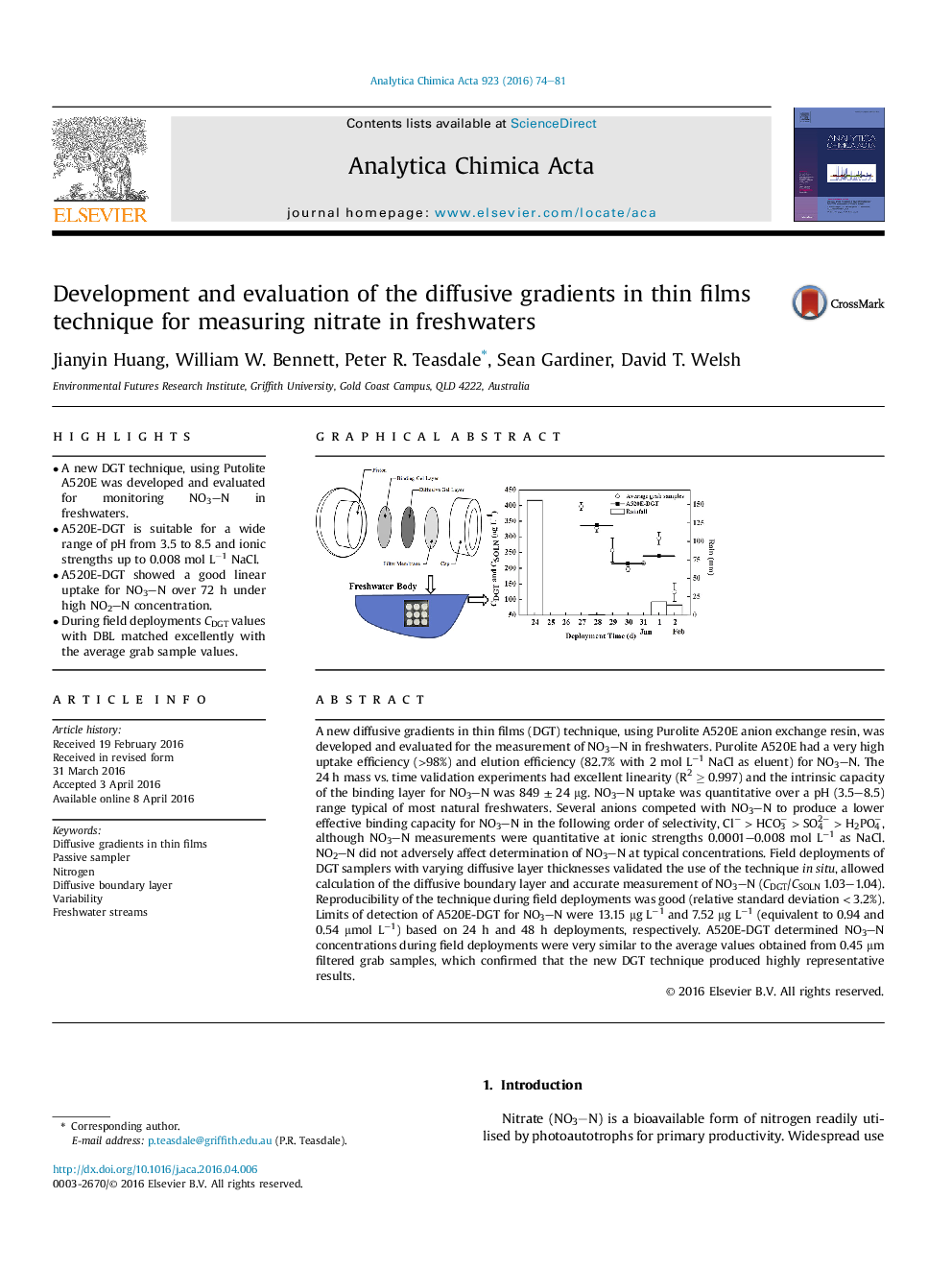| Article ID | Journal | Published Year | Pages | File Type |
|---|---|---|---|---|
| 1162958 | Analytica Chimica Acta | 2016 | 8 Pages |
•A new DGT technique, using Putolite A520E was developed and evaluated for monitoring NO3N in freshwaters.•A520E-DGT is suitable for a wide range of pH from 3.5 to 8.5 and ionic strengths up to 0.008 mol L−1 NaCl.•A520E-DGT showed a good linear uptake for NO3N over 72 h under high NO2N concentration.•During field deployments CDGT values with DBL matched excellently with the average grab sample values.
A new diffusive gradients in thin films (DGT) technique, using Purolite A520E anion exchange resin, was developed and evaluated for the measurement of NO3N in freshwaters. Purolite A520E had a very high uptake efficiency (>98%) and elution efficiency (82.7% with 2 mol L−1 NaCl as eluent) for NO3N. The 24 h mass vs. time validation experiments had excellent linearity (R2 ≥ 0.997) and the intrinsic capacity of the binding layer for NO3N was 849 ± 24 μg. NO3N uptake was quantitative over a pH (3.5–8.5) range typical of most natural freshwaters. Several anions competed with NO3N to produce a lower effective binding capacity for NO3N in the following order of selectivity, Cl− > HCO3− > SO42− > H2PO4−, although NO3N measurements were quantitative at ionic strengths 0.0001–0.008 mol L−1 as NaCl. NO2N did not adversely affect determination of NO3N at typical concentrations. Field deployments of DGT samplers with varying diffusive layer thicknesses validated the use of the technique in situ, allowed calculation of the diffusive boundary layer and accurate measurement of NO3N (CDGT/CSOLN 1.03–1.04). Reproducibility of the technique during field deployments was good (relative standard deviation < 3.2%). Limits of detection of A520E-DGT for NO3N were 13.15 μg L−1 and 7.52 μg L−1 (equivalent to 0.94 and 0.54 μmol L−1) based on 24 h and 48 h deployments, respectively. A520E-DGT determined NO3N concentrations during field deployments were very similar to the average values obtained from 0.45 μm filtered grab samples, which confirmed that the new DGT technique produced highly representative results.
Graphical abstractFigure optionsDownload full-size imageDownload as PowerPoint slide
